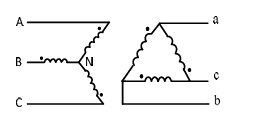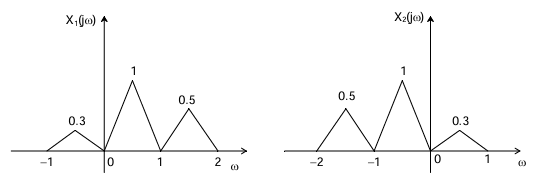Electrical Engineering Gate Yearwise
Electrical Gate 2024
Electrical Gate 2023
Electrical Gate 2022
Electrical Gate 2021
Electrical Gate 2020
Electrical Gate 2019
Electrical Gate 2018
Electrical Gate 2017 (Set 1)
Electrical Gate 2017 (Set 2)
Electrical Gate 2016 (Set 1)
Electrical Gate 2016 (Set 2)
Electrical Gate 2015 (Set 1)
Electrical Gate 2015 (Set 2)
Electrical Gate 2014 (Set 1)
Electrical Gate 2014 (Set 2)
Electrical Gate 2014 (Set 3)
Electrical Gate 2013 (Set 1)
Electrical Gate 2013 (Set 2)
Electrical Gate 2013 (Set 3)
Electrical Engineering GATE 2016 Set-1 Questions with Answer
Ques 53 Power Electronics
The voltage (vs) across and the current (is) through a semiconductor switch during a turn-ON transition are shown in figure. The energy dissipated during the turn-ON transition, in mJ, is ________.

0.125 is the correct answer.
Ques 54 Power Electronics
A single-phase full-bridge voltage source inverter (VSI) is fed from a 300 V battery. A pulse of 120° duration is used to trigger the appropriate devices in each half-cycle. The rms value of the fundamental component of the output voltage, in volts, is
Ques 55 Power Systems
In a 100 bus power system, there are 10 generators. In a particular iteration of Newton Raphson load flow technique (in polar coordinates), two of the PV buses are converted to PQ type. In this iteration,
Ques 56 Power Systems
The magnitude of three-phase fault currents at buses A and B of a power system are 10 pu and 8 pu, respectively. Neglect all resistances in the system and consider the pre-fault system to be unloaded. The pre-fault voltage at all buses in the system is 1.0 pu. The voltage magnitude at bus B during a three-phase fault at bus A is 0.8 pu. The voltage magnitude at bus A during a three-phase fault at bus B, in pu, is ________.
0.84 is the correct answer.
Ques 57 Power Systems
Consider a system consisting of a synchronous generator working at a lagging power factor, a synchronous motor working at an overexcited condition and a directly grid-connected induction generator. Consider capacitive VAr to be a source and inductive VAr to be a sink of reactive power. Which one of the following statements is TRUE?
Ques 58 Power Systems
A three-phase cable is supplying 800 kW and 600 kVAr to an inductive load. It is intended to supply an additional resistive load of 100 kW through the same cable without increasing the heat dissipation in the cable, by providing a three-phase bank of capacitors connected in star across the load. Given the line voltage is 3.3 kV, 50 Hz, the capacitance per phase of the bank, expressed in microfarads, is ________.
47.96 is the correct answer.
Ques 59 Power Systems
A 30 MVA, 3-phase, 50 Hz, 13.8 kV, star-connected synchronous generator has positive, negative and zero sequence reactances, 15%, 15% and 5% respectively. A reactance (Xn) is connected between the neutral of the generator and ground. A double line to ground fault takes place involving phases 'b' and 'c', with a fault impedance of j0.1 p.u. The value of Xn (in p.u.) that will limit the positive sequence generator current to 4270 A is ________.
0.33 is the correct answer.
Ques 60 Power Systems
If the star side of the star-delta transformer shown in the figure is excited by a negative sequence voltage, then

Ques 61 Power Systems
A single-phase transmission line has two conductors each of 10 mm radius. These are fixed at a center-to-center distance of 1 m in a horizontal plane. This is now converted to a three-phase transmission line by introducing a third conductor of the same radius. This conductor is fixed at an equal distance D from the two single-phase conductors. The three-phase line is fully transposed. The positive sequence inductance per phase of the three-phase system is to be 5% more than that of the inductance per conductor of the single-phase system. The distance D, in meters, is ________.
1.427 is the correct answer.
Ques 62 Signals and Systems
Consider a continuous-time system with input x(t) and output y(t) given by y(t) = x(t)cos(t). This system is
Ques 63 Signals and Systems
The value of ∫-∞+∞ e-tδ(2t-2) dt, where δ(t) is the Dirac delta function, is
Ques 64 Signals and Systems
Suppose x1(t) and x2(t) have the Fourier transforms as shown below.

Ques 65 Signals and Systems
The output of a continuous-time, linear time-invariant system is denoted by T{x(t)} where x(t) is the input signal. A signal z(t) is called eigen-signal of the system T, when T{z(t)} = γz(t), where γ is a complex number, in general, and is called an eigenvalue of T. Suppose the impulse response of the system T is real and even. Which of the following statements is TRUE?

Total Unique Visitors